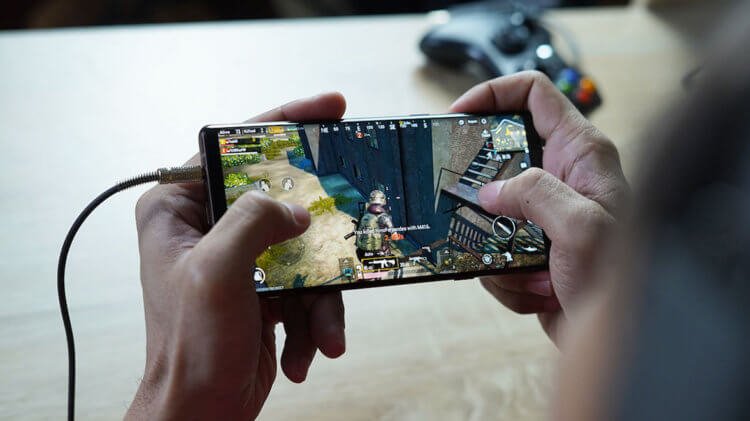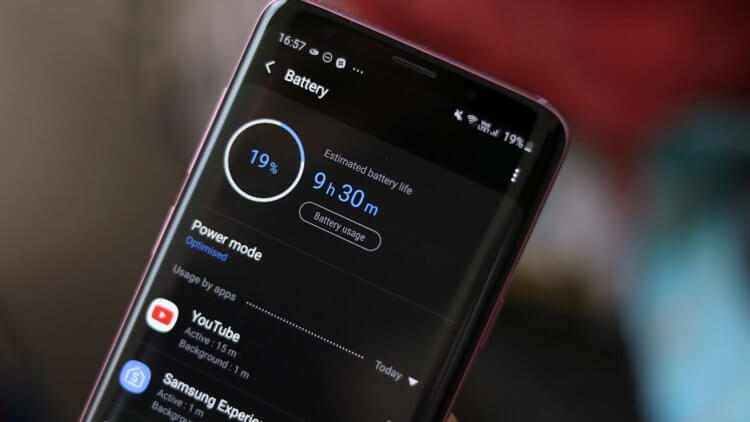Power saving mode has long been the norm for the vast majority of smartphones. It is unlikely that you will find a device even three or even four years old, which does not have an energy saving function. Another thing is that somewhere there is only one, but somewhere you can find a whole palette of modes for each individual case. It is certainly more practical to choose the one that suits your use case. For some, however, the wide assortment is more of a problem. Indeed, in order to use them correctly, you also need to understand them. Bridging the gap.

There are many energy saving modes and it is not so easy to understand them
In total in the firmware Android – the smartphone can be available up to four different modes of operation. As a rule, it is productive, adaptive, optimized (medium economy) or ultra. Let's analyze each of them separately.
When to use productive mode

Game or performance mode is needed in order to activate the full power of the processor
The first mode – productive, also known as gaming, or normal – cannot technically be considered energy-saving in principle. In it, the smartphone works at full capacity and does not save battery life at all. Moreover, in some smartphones – where it is called a gaming one, on the contrary, it can even contribute to a faster discharge, since it uses maximum resources and directs them to ensure the performance of the game. This is necessary in order to achieve fast image processing, special effects and frame rate.
Let's say if you play heavy games like World of Tanks, PUBG or Fortnite, it makes sense that you need all the power of your smartphone. This is the only way you can get maximum performance out of it and correct working out of all game details. This is true for any device, regardless of whether you are running a game on the Galaxy S20 Ultra or the Galaxy A30, the difference in processing power of which is several times different. Since the games themselves adapt to the smartphone, based on its hardware, I strongly do not recommend underestimating the performance even on the most powerful devices.
How Adaptive Power Saving Mode Works

Adaptive power saving mode is the most useless, do not use it
The adaptive power saving mode is the most tricky and, in my opinion, the most pointless mode that you could think of. It can not be found in all smartphones, but even where it is, it is something incomprehensible. As a rule, manufacturers call it smart mode, because it is able to independently adapt to the current usage pattern, adjusting the power consumption to the task at hand. If the user is chatting, the performance drops and the battery life increases, and if the user is playing, the performance increases, and the autonomy, on the contrary, tends to decrease. But it's not that simple.
My personal experience of using different smartphones with adaptive mode has shown that in fact, the mode that manufacturers call smart is utterly stupid. Devices for the most part quickly get used to the current scenario of use, and with a sharp change in occupation, they come to their senses for a long time, trying to figure out what to do with performance: increase or decrease it. As a result, if you turn on the game after a long web surfing or chatting in the messenger, the smartphone will not have time to rebuild immediately and the game will slow down for some time, and during reverse castling it will not be able to immediately lower performance and for some time will drive the processor to full coil. In a word, nonsense. Don't use it.
Best power saving mode

The balanced power saving mode is the best. I use it myself
But the optimized mode is, for my taste, the very thing. In this mode, the smartphone slightly lowers the processor's performance and screen brightness (if you wish, you can configure it yourself, the mode will not turn off), and also activates a special scenario of interaction with applications. This scenario assumes automatic management of background processes to achieve the best possible autonomy. Simply put, a smartphone can itself prohibit the background activity of certain applications, or – it all depends on the brand of the smartphone – it will warn that a particular program is consuming a lot of energy, recommending to close it.
It's hard for me to say how much the processing power of the processor is cut in this mode – after all, each manufacturer sets the settings as he sees fit. However, I myself use the optimized power saving mode and am very pleased with it. Thanks to him, my Honor View 20 lives about two hours longer than usual. In my opinion, this is more than a decent indicator, since I do not feel a drop in performance from the word at all, but an additional couple of hours of work will definitely not be superfluous.
Ultra-power saving mode

Ultra-mode turns off everything at all, turning the smartphone into a dialer
The last mode is maximum mode, or ultra mode. Despite the fact that sometimes they may differ in implementation, they pursue the same goal – to give the smartphone the opportunity to work for some more time before disconnecting. As a rule, this mode is turned on as a last resort, for example, if the charge level is rapidly approaching zero, threatening the device with a complete shutdown. In this mode, the ability to launch many energy-intensive applications, all wireless interfaces is disabled, and the smartphone itself turns, in fact, into a dialer, which is only good for calls or SMS messages.
I don't use this mode and turned it on only once, when I was waiting for a call and noticed that I had 5% charge left. True, this did not help much, because in the end an hour later the smartphone still sat down, and I did not wait for the call. Of course, if I had left everything as it is, charging would have ended even faster, but I would like the smartphone to spend in ultra-mode by a percentage per hour, so that I can be sure that I can stay in touch for a long time, despite the lack of an opportunity to recharge. . In any case, it would be both logical and convenient, because in the passive mode of operation, GSM communication is unlikely to consume much energy, which means that the autonomy could be extended even more.
